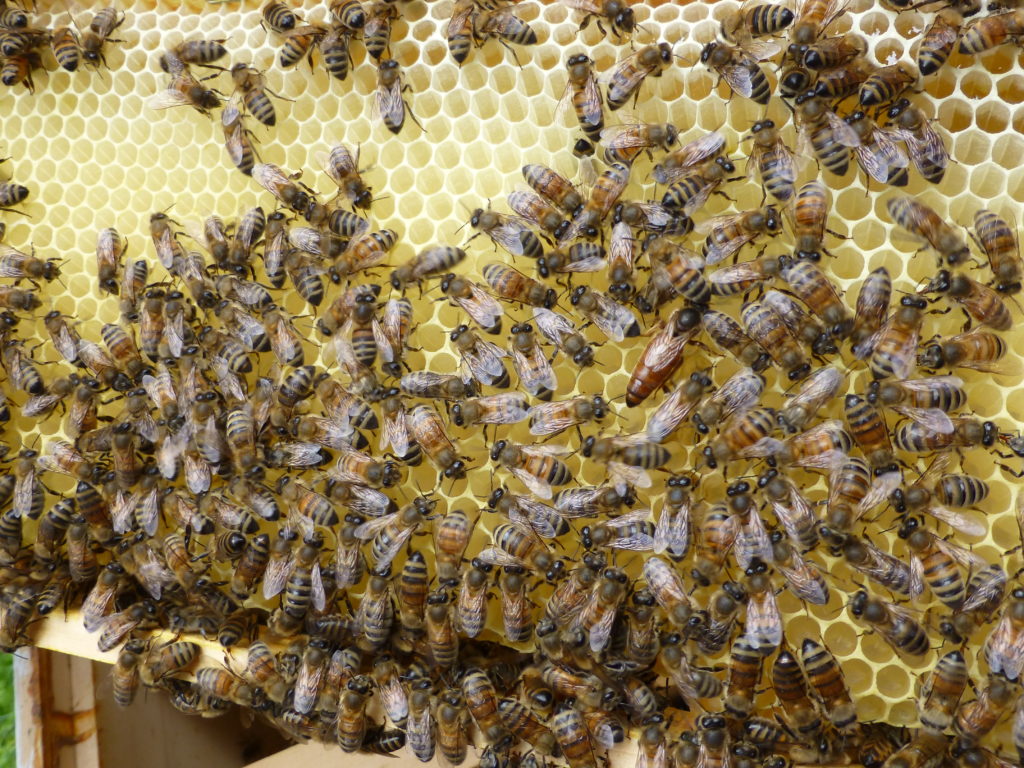
When you keep about 50 hives in a two county area of Ohio, the task can really keep you buzzin’!
And the bees are even busier. The list of beneficial products produced by the bees goes on and on.
HONEY has long been recognized as a natural remedy and has been used as a medicine for thousands of years. It has antiseptic properties and can be used as a remedy for ailments from sore throats to burns and cuts.
BEESWAX retains its ductility and tenacity under greater ranges of temperature better than any other natural mineral, plant, or insect wax.
BEE POLLEN is often referred to as nature’s most complete food. Human consumption of bee pollen is praised in the Bible, other religious books, and ancient Chinese and Egyptian texts. It has long been prescribed by traditional health practitioners for its healing properties — including the fathers of Western medicine: Hippocrates, Pliny the Elder, and Pythagoras.
ROYAL JELLY is an extremely nutritious, thick, milky-white creamy liquid secreted by the hypopharryngeal glands of the nurse bees. Queen bees live exclusively on royal jelly and it accounts for their incredible size, fertility, and longevity.
PROPOLIS is often called “Russian Penicillin” in acknowledgement of their extensive research. Research shows that propolis offers antiseptic, antibiotic, anti-fungal, and even antiviral properties. One of the most valuable properties of all the natural bee hive products is that they exhibit true immuno-stimulating characteristics. Unlike many modern medical drugs, propolis does not depress the immune system, but instead boosts it.
If you’re interested in learning more about bees or joining a beekeeping club in Richland County and the surrounding area of Ohio, check out the website for the Richland Area Beekeepers.
